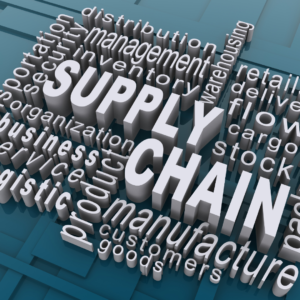We have all heard the reports of tremendous supply chain bottlenecks at US ports but no one seems to be able to explain why these bottlenecks exist or what to do about them. Recent news stories describe more than 70 large containerships waiting to be unloaded and have placed blame with crane operators, truck drivers and even the municipalities of Long Beach and Los Angeles where some of the most congested ports are located.
Most supply chain experts agree that the current trouble began in the first quarter of 2020 with the onset of the pandemic. At that time, many manufacturing facilities in China, Taiwan, Singapore and South Korea that supply goods to the US were closed or forced to operate on a limited basis due to government restrictions designed to slow the spread of infection.
Shortly after Asian manufacturing facilities shut down, many of the large shipping lines took vessels out of service and reduced shipping schedules. According to Seatrade Maritime News, as of June 2020, the amount of idle containership capacity was equivalent to 2.7 million 20-foot container units or 12% of the worldwide containership capacity. Almost immediately, industry analyst Alphaliner reported, “There are encouraging signs that carriers have over-estimated the level of contraction in demand in May and capacity shortages on certain routes have already started to push spot freight rates up.”
And rates did go up. Between June of 2020 and June 2021, ocean freight rates between Asia and the US increased from approximately $5,000 for a 40-foot container to as much as $25,000, a 500% increase. At the same time that manufacturing was interrupted and shipping lines were reducing capacity, the US government was moving forward with an aggressive policy of stimulus spending totaling $2.6 trillion dollars. That’s a lot of zeroes: $2,600,000,000,000.
Because many Americans were working from home and could not spend money on services or travel, much of the stimulus money was spent on home furnishings, exercise equipment, the new PS5 and other durable goods manufactured overseas. Asian factories came back online to meet demand but many old container vessels had been put out of service or were getting costly and time consuming retrofits so containership capacity remained strained.
Along with reduced shipping capacity and record freight volumes, other reasons for congestion at US ports are driver shortages and the lack of available truck chassis for moving containers. The American Trucking Association estimates that the industry is short 80,000 drivers and that things could get worse as older drivers retire. In response, the recent infrastructure bill includes legislation to change the minimum age for interstate drivers from 21 to 18 and the industry is raising salaries and recruiting women and people of color, both demographics that have historically been underrepresented in the profession.
Despite these and other remediation efforts, most experts predict that supply chain bottlenecks will persist into 2022. We have seen that supply chain bottlenecks can increase costs and cause prices to increase in all areas of the economy. In a future article, I will look at how supply chain pressures are increasing warehouse demand and pushing up prices for industrial real estate.
Please contact me at mark@insitecommercialrealty.com with any questions about logistics, supply chain, distribution or your commercial real estate needs.

